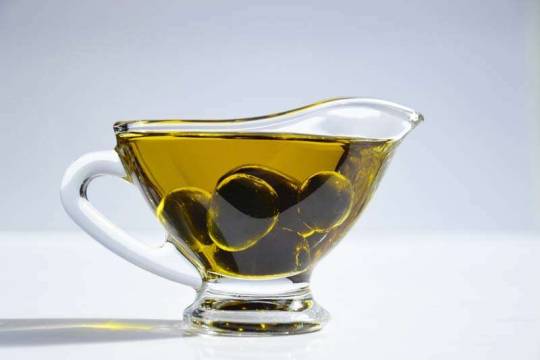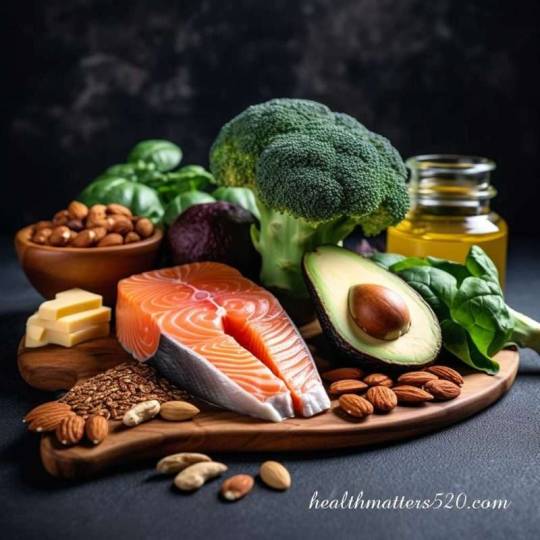#carnivorediet
Text
I don't know what to do please help
1) buy meat for my lunch even if i had other things like veggies and a little bit of meat without fat
2) Save the money for tomorrow and try to make a carnivore lunch with eggs and butter and a bit of meat
3 notes
·
View notes
Text

ON THE LEFT 97KG ON THE RIGHT 84KG. NOW ITS TIME TO GET SHREDDED.
#carnivore#CARNIVOREDIET#TRAINING#GYM#transformation#CARNIVORETRANSFORMATION#WEIGHTLOSS#FATLOSS#KETO#GLOWUP#CUT#TRIM
3 notes
·
View notes
Text
Been a minute
I am still working towards this diet. I have had a couple times where I had a couple beers and some carb foods. Overall I'm staying at around 189 lbs. This will be the norm unless I push again for long, extended meat-only days. I'm going to tighten up my routine and work towards that. I would like to see 185 lbs!
6 notes
·
View notes
Photo

My one meal for the day. Protein and fat!!! Let's go!!! @scarbajals @shawnbaker1967 @carnivoremd2.0 @stevenrimmer @steveblackentertains @carnivoremd2.0 @ketogenicendurance . . . . . #carnivoretransformation #carnivorechallenge #carnivoreculture #carnivoretribe #carnivoreclub #carnivoreketo #worldcarnivoretribe #carnivoreforlife #carnivorediet #carnivores #carnivorelife #carnivorelifestyle #carnivore #carnivorefood #omad #steak #meatlover (at Toronto, Ontario) https://www.instagram.com/p/Cj3tV2UuAvAVgtcHf6IpAnpIGTR7w2X4fyH9D40/?igshid=NGJjMDIxMWI=
#carnivoretransformation#carnivorechallenge#carnivoreculture#carnivoretribe#carnivoreclub#carnivoreketo#worldcarnivoretribe#carnivoreforlife#carnivorediet#carnivores#carnivorelife#carnivorelifestyle#carnivore#carnivorefood#omad#steak#meatlover
5 notes
·
View notes
Text

Making healthier food choices is important to manage your diabetes and to reduce your risk of diabetes complications. We know that not everyone agrees on what is the best diet.
If you feel overwhelmed about your feelings about food and diabetes, we have plenty of information to help you.
#diabetes type 2#diabetes#health#goodhealth#healthylifestyle#healthyfood#eatrealfood#lowcarb#Ichf#keto#paleo#diabetesawareness#carnivorediet#ketodiet#lifestyle#habits#healthyhabits#obesity#type2diabetes#sugar#diabetesremedies#balancedbloodsugar#balancedeating#youcaneatfruit#lowerbloodsugars#snacksarelife#diabetestype2
2 notes
·
View notes
Text
Popular Health Related Diets: An Overview of Characteristics, Benefits, and More

Greetings, health-conscious readers! Welcome to an enlightening journey into the world of popular diets. In this blog post, we will delve into the significance of diet in relation to our overall health and well-being. As the saying goes, "You are what you eat," and it holds true that the food we consume plays a crucial role in shaping our physical and mental health.
A balanced and nutritious diet is the foundation of a healthy lifestyle. The food we consume serves as fuel for our bodies, providing essential nutrients, vitamins, and minerals that support vital functions. Moreover, the right dietary choices can help prevent chronic diseases, maintain a healthy weight, boost energy levels, and promote overall well-being.
Throughout this blog post, we will explore a diverse range of popular diets, including the Mediterranean diet, Keto diet, Paleo diet, Vegan diet, Vegetarian diet, Atkins diet, DASH diet, Flexitarian diet, Dukan diet, Brat diet, South Beach diet, GOLO diet, Anti-Inflammatory diet, Low FODMAP diet, Carnivore diet, and even the Brazilian diet.
By examining the characteristics, benefits, and considerations of each diet, you will gain valuable insights into their potential impact on your health and lifestyle. However, it's important to remember that individual needs and preferences vary. It is always advisable to consult with a healthcare professional or registered dietitian before embarking on any new dietary regimen.
So, without further ado, let's embark on this enlightening journey through the fascinating world of popular diets. Discover the diverse approaches to nutrition and find the one that resonates with your unique needs and aspirations. Together, let's unlock the power of food and nourish our bodies for a healthier and more fulfilling life.

Mediterranean Diet
The Mediterranean diet is renowned for its emphasis on wholesome, plant-based foods, healthy fats, and moderate consumption of lean proteins. Drawing inspiration from the traditional eating patterns of countries bordering the Mediterranean Sea, this diet has gained recognition for its numerous health benefits.
At the core of the Mediterranean diet are plant-based foods, including fruits, vegetables, whole grains, legumes, nuts, and seeds. These nutrient-rich foods provide a wide array of vitamins, minerals, and antioxidants that support overall health and well-being. Additionally, the Mediterranean diet encourages the consumption of healthy fats, primarily from olive oil and fatty fish, which are rich in omega-3 fatty acids.

Benefits
One of the key benefits of the Mediterranean diet is its positive impact on cardiovascular health1. Numerous studies have shown that following this dietary pattern can reduce the risk of heart disease, lower cholesterol levels, and improve blood pressure control. The abundance of fruits, vegetables, whole grains, and healthy fats in the Mediterranean diet contributes to these heart-protective effects.
Moreover, the Mediterranean diet is associated with increased longevity2 and a reduced risk of chronic diseases. The consumption of antioxidant-rich foods, such as colorful fruits and vegetables, along with the anti-inflammatory properties of the diet, may help combat oxidative stress and inflammation in the body. This, in turn, can help protect against conditions like diabetes, certain cancers, and neurodegenerative diseases.
Incorporating the Mediterranean diet into your daily life can be both enjoyable and fulfilling. Here are some sample meal ideas to inspire you:
- Breakfast: Start your day with a Greek yogurt topped with fresh berries, a sprinkle of nuts, and a drizzle of honey. Enjoy it with a side of whole grain toast.
- Lunch: Prepare a colorful salad with mixed greens, cherry tomatoes, cucumbers, olives, feta cheese, and a lemon-olive oil dressing. Pair it with a serving of grilled chicken or chickpeas.
- Dinner: Savor a Mediterranean-style grilled fish, such as salmon or sardines, seasoned with herbs and lemon. Serve it alongside a generous portion of roasted vegetables and a side of whole grain couscous or quinoa.
- Snacks: Opt for a handful of almonds or walnuts, fresh fruit, or vegetable sticks with hummus as healthy and satisfying snack choices.
Incorporating the Mediterranean diet into your daily life can be as simple as:
- Prioritizing plant-based foods in your meals, aiming for a variety of colorful fruits and vegetables.
- Using extra virgin olive oil as your primary source of fat for cooking and dressing.
- Including whole grains, such as brown rice, quinoa, and whole wheat bread, in your diet.
- Consuming moderate amounts of lean proteins, such as fish, poultry, and legumes.
- Limiting the consumption of red meat and processed foods.
- Enjoying meals in the company of loved ones, savoring the flavors and taking time to appreciate each bite.
By embracing the Mediterranean diet, you can nourish your body with nutrient-dense foods, protect your heart health, and reduce the risk of chronic diseases. So, why not embark on a culinary journey inspired by the vibrant and wholesome Mediterranean lifestyle?
Keto Diet
The ketogenic diet, or keto diet for short, has gained significant popularity in recent years. This dietary approach places a strong emphasis on high-fat, low-carbohydrate intake, with the goal of inducing a metabolic state known as ketosis. During ketosis, the body shifts from using carbohydrates as its primary fuel source to utilizing stored fats for energy.

Benefits
One of the key benefits associated with the keto diet is its potential for weight loss. By severely restricting carbohydrate intake and increasing fat consumption, the body enters a state where it burns fat more efficiently. This can lead to a reduction in body weight and body fat percentage. Additionally, the keto diet has been shown to help suppress appetite, which can further support weight loss efforts.
Another advantage of the keto diet is its potential to improve insulin sensitivity. By minimizing carbohydrate intake, blood sugar and insulin levels tend to stabilize, which can be beneficial for individuals with insulin resistance or type 2 diabetes. However, it's important to note that anyone with diabetes or other underlying health conditions should consult with a healthcare professional before starting the keto diet.
Beyond weight loss and improved insulin sensitivity, the keto diet has also shown promise in various therapeutic applications. Research suggests that it may be beneficial for individuals with epilepsy, as it can help reduce the frequency and severity of seizures. Additionally, some studies have explored the potential benefits of the keto diet for managing certain neurological conditions, such as Alzheimer's disease and Parkinson's disease. However, more research is needed in these areas.
Considerations
While the keto diet offers potential benefits, it's important to consider some considerations and potential challenges associated with this dietary approach. One of the main challenges is the significant restriction of carbohydrates, which may require careful meal planning and adjustment. This can be particularly challenging for those accustomed to a higher carbohydrate intake.
Additionally, the keto diet may not be suitable for everyone. Individuals with certain medical conditions, such as pancreatitis or liver disease, should avoid this dietary approach. Furthermore, the keto diet may lead to nutrient deficiencies if not properly planned, as it restricts many food groups that are rich in essential vitamins and minerals.
It's also worth noting that some people may experience side effects when transitioning to the keto diet. This can include symptoms such as fatigue, dizziness, and digestive issues, commonly referred to as the "keto flu." These symptoms typically subside as the body adapts to using fats as its primary fuel source.
In conclusion, the ketogenic diet can be a powerful tool for weight loss, improved insulin sensitivity, and potential therapeutic applications. However, it's important to approach this diet with caution and consider the potential challenges and individual suitability. If you are considering the keto diet, consulting with a healthcare professional or registered dietitian is highly recommended to ensure it aligns with your specific needs and goals.
Paleo Diet
The paleo diet, also known as the "caveman" or "hunter-gatherer" diet, takes inspiration from our ancestors' eating patterns. It focuses on consuming whole, unprocessed foods that mimic what our early human predecessors might have eaten. The fundamental principle of the paleo diet is to avoid processed foods, grains, legumes, dairy products, and added sugars, while emphasizing the consumption of lean meats, fish, fruits, vegetables, nuts, and seeds.

Benefits
One of the main benefits of the paleo diet is its potential to reduce inflammation in the body. By eliminating processed foods and refined sugars, which are known to contribute to inflammation, the paleo diet promotes the consumption of nutrient-dense foods that can help combat chronic inflammation. This can have positive effects on various aspects of health, such as reducing the risk of chronic diseases like heart disease, diabetes, and certain autoimmune conditions.
Additionally, the paleo diet has been associated with weight management and improved body composition. By focusing on whole, unprocessed foods and encouraging a higher intake of protein and healthy fats, the paleo diet can support satiety and help regulate hunger hormones. This can lead to better appetite control and potentially aid in weight loss or weight maintenance efforts.
Another advantage of the paleo diet is its emphasis on nutrient density. By prioritizing whole, unprocessed foods, the paleo diet tends to provide a wide range of essential vitamins, minerals, and antioxidants. This can help ensure a well-rounded nutrient intake and support overall health and well-being.
Limitations and Criticisms
However, it's important to consider some potential limitations and criticisms of the paleo diet. Critics argue that the strict elimination of entire food groups, such as grains and legumes, may lead to nutrient deficiencies if not carefully planned. These food groups can provide valuable nutrients, such as fiber, B vitamins, and minerals. Therefore, it's important to ensure adequate substitution and variety within the paleo diet.
Additionally, some people may find it challenging to adhere to the paleo diet in modern society, where processed and convenience foods are abundant. The restrictive nature of the diet may also make it socially challenging in certain situations, such as dining out or attending social gatherings.
In conclusion, the paleo diet promotes the consumption of whole, unprocessed foods similar to what our ancestors ate. It offers potential benefits such as reducing inflammation, supporting weight management, and improving nutrient density. However, it's important to address the potential limitations and criticisms of the diet, such as the potential for nutrient deficiencies and the challenges of adhering to its strict guidelines. As with any dietary approach, individual considerations and guidance from a healthcare professional or registered dietitian are advised.
Vegan Diet
The vegan diet is a plant-based dietary approach that excludes all animal products, including meat, fish, dairy, eggs, and honey. It places a strong emphasis on the consumption of plant-based foods, such as fruits, vegetables, whole grains, legumes, nuts, and seeds. Veganism goes beyond just a dietary choice and encompasses a lifestyle that aims to minimize harm to animals and promote environmental sustainability.

Benefits
One of the primary benefits of following a vegan diet is its positive impact on animal welfare. By abstaining from the consumption of animal products, vegans choose to support a lifestyle that reduces the demand for animal exploitation in the food industry. This ethical consideration aligns with the belief that animals should not be used for human consumption and allows individuals to make choices that align with their values.
Read the full article
#antiinflammatorydiet#Atkinsdiet#bratdiet#Braziliandiet#carnivorediet#DASHDiet#dukandiet#flexitariandiet#golodiet#ketodiet#lowFODMAPdiet#mediterraneandiet#paleodiet#SouthBeachdiet#vegandiet#vegetariandiet
0 notes
Text
Nutrition for Seizure Control: Dietary Therapies

"Discover effective Dietary Therapies for Seizure Control. Learn about the Keto diet, Nutrition approaches, and more. Trust our expertise in Diet and Seizures."

Dietary Therapies and Seizure Control
Seizure control is a crucial aspect of managing epilepsy, and while medications can be effective, they may not work for everyone. This is where diet comes in. A healthy and balanced diet can provide the necessary nutrients and calories needed for overall health while also helping to control seizures.
Certain diets have been found to be particularly beneficial for seizure reduction in some individuals. For example, the Atkins diet emphasizes low carbohydrate intake which has shown promise in reducing seizures. The glycemic index of foods - which measures how quickly they raise blood sugar levels - may also play a role in seizure control.
For pregnant women with epilepsy, maintaining a healthy diet and reducing sugar intake can help prevent seizures during pregnancy. It's important to note that any dietary changes should always be discussed with a healthcare professional first.
So how exactly does diet affect seizures? The answer lies in the brain's electrical activity. When certain triggers cause abnormal electrical activity in the brain, it can lead to a seizure. Research suggests that certain foods or lack thereof may trigger this abnormal activity.
For example, high-fat diets such as the ketogenic diet have been shown to reduce seizures by altering the metabolism of glucose in the brain. On the other hand, consuming too much sugar or carbohydrates may increase seizure activity due to their effect on blood sugar levels.
In addition to specific diets, simply maintaining a healthy and balanced diet can help improve overall health and potentially reduce seizure frequency. This includes consuming plenty of fruits, vegetables, lean proteins, and whole grains while limiting processed foods and added sugars.
It's clear that there is a strong relationship between diet and epilepsy/seizure control. While more research is needed to fully understand this connection, incorporating healthy eating habits into your daily routine may be an effective way to manage seizures alongside medication.
The Role of Dietary Therapies in Managing Epilepsy and Seizure Disorders
Dietary therapies have become increasingly popular in recent years as a treatment option for managing epilepsy and seizure disorders. While medications are often the first line of defense, dietary therapies can be an effective complement to medication or even used as a standalone treatment option. Now let us explore the role of dietary therapies in managing epilepsy and seizure disorders.
Effective Treatment Option
Dietary therapies have been shown to be an effective treatment option for managing epilepsy and seizure disorders. The ketogenic diet is one of the most well-known dietary therapies for epilepsy.
It involves consuming high amounts of fat and low amounts of carbohydrates, which puts the body into a state of ketosis. This state has been shown to reduce seizures in some people with epilepsy.
Other dietary therapies include the modified Atkins diet and the low glycemic index treatment. These diets also focus on reducing carbohydrate intake while increasing protein and fat intake. Studies have shown that these diets can also be effective in reducing seizures.
Working with Healthcare Providers
It is important to work closely with a healthcare provider when considering dietary therapies as a treatment option for epilepsy and seizure disorders. A healthcare provider can help determine if a particular diet is appropriate based on individual needs and medical history.
For example, while the ketogenic diet may be effective for some people with epilepsy, it may not be appropriate for everyone. It requires strict adherence to specific macronutrient ratios, which can be difficult to maintain long-term without proper guidance from a healthcare provider.
Healthcare providers can monitor individuals on dietary therapies to ensure they are meeting their nutritional needs while still adhering to the prescribed diet plan.
How the Ketogenic Diet Works in Treating Epilepsy
The ketogenic diet, or keto diet, is a high-fat, low-carbohydrate diet that has been used to treat epilepsy since the 1920s. It works by forcing the body to use ketones, a type of molecule produced from fat, as its primary source of energy instead of glucose.
This metabolic shift can reduce seizures in some people with epilepsy, although the exact mechanism is not fully understood.
What is a Ketogenic Diet?
A ketogenic diet typically consists of high-fat foods such as meat, fish, eggs, and dairy products; low-carbohydrate vegetables such as leafy greens and broccoli; and small amounts of nuts and seeds.
The goal is to limit carbohydrate intake to less than 50 grams per day while increasing fat intake to approximately 70-80% of daily calories. This forces the body into a state called ketosis, where it burns fat for fuel instead of glucose.
How Does the Ketogenic Diet Help Epilepsy?
The exact mechanism by which the ketogenic diet reduces seizures in some people with epilepsy is not fully understood. However, there are several theories:
Ketones may have an anticonvulsant effect on brain cells.
The keto diet may increase levels of GABA (gamma-aminobutyric acid), a neurotransmitter that helps calm brain activity.
The keto diet may reduce inflammation in the brain.
While research on the effectiveness of the keto diet for treating epilepsy is limited and further studies are needed to confirm its benefits, many people with epilepsy who have not responded well to medication have reported significant improvements after starting the keto diet.
What Does a Keto Diet for Epilepsy Look Like?
A typical day on a Ketogenic Diet for Epilepsy might include:
Breakfast: Scrambled eggs cooked in butter with bacon or sausage
Lunch: Grilled chicken salad with avocado and olive oil dressing
Dinner: Baked salmon with roasted broccoli and cauliflower
Snacks: Cheese sticks, hard-boiled eggs, or a handful of almonds
It is important to note that the keto diet should only be undertaken under the supervision of a healthcare professional, as it can cause side effects such as constipation, nausea, and fatigue. It may not be appropriate for people with certain medical conditions such as pancreatitis or liver disease.
Sponsored...
⚡️The Ultimate Keto Meal Plan⚡️

>>> Get 21 Free Keto Recipes (Yummy) >>>
Today, We’ve rounded up 21 of our favorite Keto dishes for breakfast, lunch, and dinner. You’re going to want to bookmark this list, as these recipes are totally drool-worthy.
All recipes come with simple ingredients and easy instructions and you can Download everything today for Free.
Sounds good?
==> Just Click Here to Download your FREE copy of 21 Yummiest Keto Recipes.
Your family and friends will love these Keto recipes...
And everything is 100% keto-approved and proven to speed up your ketosis.
Just follow the instructions below and download your Free Keto cookbook :)
- Click Here to get to the Download page.
- Enter your details about where to send the recipes.
- Check your email address in the next few minutes (also check your spam filter) and enjoy your new recipes!
Special Considerations for Implementing a Special Diet for Seizure Management
Consult with a healthcare professional before implementing any special diet for seizure management.
Before starting any special diet for seizure management, it is important to consult with a healthcare professional. A doctor or dietitian can help determine if a special diet is appropriate and safe for the individual based on their medical history, age, and weight. They can also provide guidance on which specific diet plan may be most effective.
Some diets that have been shown to be effective in managing seizures include the ketogenic diet, modified Atkins diet, and low glycemic index treatment. However, these diets are not suitable for everyone and should only be implemented under the supervision of a healthcare professional.
Consider the individual's age, weight, and medical history when choosing a diet plan.
When choosing a special diet for seizure management, it is important to consider the individual's age, weight, and medical history. For example, children may require more calories than adults due to their growing bodies.
Individuals with certain medical conditions such as kidney disease or liver disease may need to avoid certain types of diets.
It is important to consider the individual's lifestyle and preferences when choosing a special diet. For instance, some individuals may find it difficult to follow strict dietary restrictions long-term.
Monitor the individual's nutrient intake to avoid deficiencies or excesses that may trigger seizures.
Special diets for seizure management can sometimes lead to nutrient deficiencies or excesses if not properly monitored. It is important to track nutrient intake through regular blood tests and adjust the diet plan accordingly if necessary.
Certain nutrients that are commonly monitored include vitamin D, calcium, sodium, magnesium, and potassium. Deficiencies in these nutrients can increase the risk of seizures while excesses can lead to other health problems such as kidney stones or high blood pressure.
Keep track of the individual's progress and adjust the diet plan accordingly.
Monitoring an individual's progress on a special diet for seizure management is essential in determining its effectiveness. Regular check-ins with a healthcare professional can help identify any changes in seizure frequency or side effects.
If the diet plan is not effective, adjustments may need to be made. This could include changing the types of foods allowed on the diet or adjusting macronutrient ratios.
Be aware of potential side effects or complications associated with certain diets, such as gastrointestinal issues or kidney stones.
Special diets for seizure management can sometimes lead to side effects or complications. For example, a ketogenic diet may cause constipation, while a low glycemic index treatment may increase the risk of kidney stones.
It is important to be aware of these potential side effects and work with a healthcare professional to minimize them. In some cases, adjustments to the diet plan may be necessary to alleviate symptoms.
Educate the individual and their caregivers on how to properly prepare and follow the diet plan.
Proper education on how to prepare and follow a special diet for seizure management is essential for its success. This includes guidance on meal planning, food preparation, and portion sizes.
Caregivers should also be educated on how to recognize and respond to any potential problems such as seizures or side effects. Regular communication with healthcare professionals can help ensure that everyone involved in managing seizures is informed and prepared.
Foods That Can Trigger Seizures: What to Avoid in Your Diet
Artificial Ingredients in Processed Foods
Processed foods are often loaded with artificial ingredients that can trigger seizures. These additives include preservatives, artificial sweeteners, and food coloring. It's best to avoid processed foods altogether and opt for fresh, whole foods whenever possible.
If you do choose to consume processed foods, be sure to read the labels carefully and avoid any products that contain artificial ingredients.
Natural Foods That May Trigger Seizures
While many natural foods are healthy and safe for most people, some may trigger seizures in certain individuals. For example, avocados contain a chemical called persin that can cause seizures in some people.
Similarly, nuts like walnuts and pecans can also trigger seizures in some individuals. It's important to pay attention to your body's reactions to different types of food and avoid anything that seems to trigger seizure activity.
Meat High in Saturated Fat
Consuming meat that is high in saturated fat has been linked to an increased risk of seizures. This includes fatty cuts of beef, pork, lamb, and processed meats like bacon and sausage. Instead of these meats, try leaner options like chicken or fish. If you do choose to eat red meat, look for lean cuts like sirloin or flank steak.
Mayonnaise and Other Sodium-Rich Condiments
Mayonnaise is a popular condiment that is often used on sandwiches or as a dip for vegetables or chips. However, it contains high levels of sodium which can increase the risk of seizures in some individuals.
Other condiments like ketchup and soy sauce also contain high levels of sodium and should be consumed in moderation.
Research Studies on the Effectiveness of Special Diets for Seizure Management
Numerous Studies Have Been Conducted to Investigate the Effectiveness of Special Diets for Seizure Management
Epilepsy is a neurological disorder that affects millions of people worldwide. It is characterized by recurrent seizures, which can be debilitating and interfere with daily life.
While medication is the most common treatment for epilepsy, some patients do not respond well to drugs or experience side effects. As a result, researchers have investigated the effectiveness of special diets for seizure management.
Over the years, numerous studies have been conducted to investigate the relationship between diet and seizures. These studies have explored various diets, including the ketogenic diet, modified Atkins diet, low glycemic index treatment (LGIT), and others.
The results of these studies have been mixed, but there is evidence to suggest that certain diets may be effective in reducing seizure frequency and severity in some patients.
A Registered Dietitian Can Help Patients with Epilepsy Plan and Implement a Special Diet That Suits Their Individual Needs
If you are considering a special diet for seizure management, it's important to work with a registered dietitian who has experience working with patients with epilepsy.
A registered dietitian can help you plan and implement a special diet that suits your individual needs. They can also monitor your progress and make adjustments as needed.
Research Has Shown That Certain Diets May Reduce the Frequency and Severity of Seizures in Some Patients
One of the most well-known special diets for epilepsy is the ketogenic diet. This high-fat, low-carbohydrate diet has been shown to reduce seizure frequency in some patients. In fact, one study found that 38% of children who followed a ketogenic diet experienced a greater than 50% reduction in seizures.
Another study found that 32% of patients who followed a modified Atkins diet experienced a greater than 50% reduction in seizures. The modified Atkins diet is similar to the ketogenic diet but allows for slightly more carbohydrates.
Evidence Suggests That Special Diets May Be Particularly Effective for Children with Epilepsy Who Have Not Responded Well to Medication
Special diets may be particularly effective for children with epilepsy who have not responded well to medication. One study found that 38% of children who followed a ketogenic diet experienced a greater than 50% reduction in seizures.
Another study found that the modified Atkins diet was effective in reducing seizure frequency in children with refractory epilepsy.
Johns Hopkins is one of the leading institutions conducting research on the use of special diets for seizure management. The Johns Hopkins Ketogenic Diet Center has been providing dietary therapy for patients with epilepsy since 1993.
The center offers a range of special diets, including the ketogenic diet, modified Atkins diet, and LGIT.
Short-term and Long-term Adverse Events of Special Diets for Seizure Management
The modified Atkins diet has been proven to be effective in reducing seizure frequency in patients who do not respond to traditional antiepileptic drugs. However, like all other diets, it may cause some adverse effects.
Let us explore the short-term and long-term adverse events of special diets for seizure management.
Short-Term Adverse Effects of Modified Atkins Diet
The modified Atkins diet is a low-carbohydrate, high-fat diet that is often used to manage seizures. While it has been shown to be effective in reducing seizure frequency, it may cause some short-term adverse effects such as constipation, nausea, and vomiting.
Constipation is a common side effect of the modified Atkins diet. This happens because the body is not getting enough fiber from carbohydrates. To avoid constipation, patients are advised to drink plenty of water and include high-fiber foods such as vegetables in their meals.
Nausea and vomiting are also common side effects of the modified Atkins diet. These symptoms usually occur during the first few weeks of starting the diet and typically go away on their own after a few days.
Patients are advised to eat small meals throughout the day instead of three large meals and avoid foods that trigger nausea.
Long-Term Effects of Modified Atkins Diet
While studies have shown that a modified Atkins diet can reduce seizure frequency in just a few weeks, its long-term effects are not yet fully understood. Some studies suggest that prolonged use of this diet may lead to an increased risk of cardiovascular disease due to its high-fat content.
On the other hand, some studies have shown that there is no significant difference in lipid profiles between patients on a modified Atkins diet compared to those on a traditional ketogenic diet or control group.
Therefore, more research needs to be done before any conclusive statements can be made about the long-term effects of this type of diet.
Consult a Healthcare Professional Before Starting Any Special Diet
It is important to consult a healthcare professional before starting any special diet for seizure management. A healthcare professional can help determine if the modified Atkins diet is appropriate for you and monitor your progress while on the diet.
Special Diet Centers for Adults and Children with Epilepsy: What to Expect
Visiting a special diet center can be an essential step for adults and children with epilepsy who are looking to manage their seizures through dietary changes.
Read the full article
#absenceseizures#bratdiet#carnivorediet#complexpartialseizures#dogseizures#Dukandiet#golodiet#howmanycarbsinalowcarbdiet#howmuchcaffeineindietcoke#KetoDiet#Ketogenicdiet#mediterraneandiet#myoclonicseizures#psychogenicnonepilepticseizures#psychogenicseizures#seizures#seizuresindogs#seizuresinspanish#Today'sPaper#TodaysArticle#typesofseizures#whatcausesseizures#whatisvegandiet
0 notes
Text
Day 16 Of Losing Weight On The Carnivore Keto Diet.
12oz Ribeye Steak
King Prawns
Beef Liver
Beef Heart
Cooked in a Ninja Foodi air fryer with a small amount of butter for 13 minutes @ 200c with a small amount of sea salt added afterward.
1157 Calories
59% Fat
40% Protein
0% Carbs
#keto#ketoweightloss#keto tips#ketofood#carnivore#carnivorediet#ketolife#ketodiet#ketomeals#ketogenic
1 note
·
View note
Text

EVERYTHING YOU NEED TO KNOW ABOUT THE CARNIVORE DIET
0 notes
Link
Are you a meat lover looking for new and exciting ways to enjoy beef? Look no further! In this article, we will explore a variety of mouthwatering beef recipes specifically designed for those following the carnivore diet. 🥩🔥 From succulent steak cuts to juicy burgers, these recipes will satisfy your cravings while adhering to the principles of the carnivore diet. Discover how to prepare tender beef ribs, flavorful beef stews, and sizzling beef kebabs that will leave you wanting more. 🍖🍽️ Whether you're a seasoned carnivore or just starting your journey, these beef recipes are sure to delight your taste buds. Get ready to indulge in a world of delicious flavors and discover new ways to enjoy your favorite protein-packed meat. Let's dive into the world of carnivore diet beef recipes! 🍽️😋1. Nutritional Benefits of Beef in a Carnivore Diet🥩 Beef is a nutrient-dense food that provides essential vitamins and minerals for a carnivore diet. 🔋 It is an excellent source of high-quality protein, promoting muscle growth and repair. 💪 Beef contains iron, zinc, and B vitamins, which support energy production and a healthy immune system. 🧠 The omega-3 fatty acids found in beef contribute to brain health and reduce inflammation. 🔥 Additionally, beef is rich in creatine, enhancing athletic performance and muscle strength. 🌱 Grass-fed beef has higher levels of omega-3s and conjugated linoleic acid, offering even more health benefits. 🍽️ Including beef in a carnivore diet can help meet nutritional needs and support overall well-being.2. Delicious and Easy Beef Recipes for the Carnivore DietLooking for mouth-watering beef recipes that are both delicious and easy to make? Look no further! We've got you covered with a variety of carnivore-friendly dishes that will satisfy your cravings. 🔥🥩 1. Juicy Steak with Garlic Butter Sauce: Savor the tender goodness of a perfectly cooked steak, topped with a rich garlic butter sauce. It's a carnivore's dream come true! 🤤 2. Spicy Beef Stir-Fry: Heat things up with this fiery stir-fry, packed with tender beef, colorful veggies, and a kick of spice. Quick, easy, and oh-so-satisfying! 🔥🌶️ 3. Classic Beef Burger: Sink your teeth into a juicy beef patty, nestled between two fluffy buns. Customize with your favorite toppings for a burger that's pure perfection. 🍔🤩 4. Slow-Cooked Pot Roast: Indulge in the melt-in-your-mouth tenderness of a slow-cooked pot roast, infused with savory flavors and served with hearty vegetables. Comfort food at its finest! 😋🍲 5. Beef and Broccoli Stir-Fry: Enjoy the perfect balance of tender beef and crisp broccoli, coated in a savory sauce. This quick and healthy dish will leave you wanting more. 🥦🍛 6. Grilled Beef Skewers: Fire up the grill and thread succulent chunks of beef onto skewers. Marinated to perfection, these skewers are a delicious and fun way to enjoy beef. 🍢🔥 7. Beef Chili: Warm up with a hearty bowl of beef chili, packed with flavorful spices, beans, and tender chunks of beef. It's the ultimate comfort food for chilly nights. 🌶️🍲 8. Beef and Mushroom Stroganoff: Delight your taste buds with this creamy and savory dish, featuring tender beef and earthy mushrooms in a luscious sauce. Pure comfort on a plate! 🍄😍 9. Beef Tacos: Get your taco fix with these mouthwatering beef tacos. Top with your favorite fixings and enjoy the perfect combination of flavors and textures. 🌮🤤 10. Beef Kebabs with Chimichurri Sauce: Elevate your grilling game with these flavorful beef kebabs, served with a zesty chimichurri sauce. A burst of fresh and tangy flavors in every bite! 🍢🌿3. Exploring Different Cuts of Beef for Carnivore Diet RecipesWhen following a carnivore diet, it's essential to understand the different cuts of beef available. Here are some key cuts to consider: Ribeye: Known for its marbling, this cut offers a rich and juicy flavor. Sirloin: A leaner option with a robust taste, perfect for grilling. Tenderloin: The most tender cut, ideal for special occasions. T-Bone: Combines the tenderness of the tenderloin with the flavor of the strip steak. Strip Steak: A well-marbled cut with a bold, beefy taste. Each cut has its unique characteristics, allowing you to experiment with various flavors and textures in your carnivore diet recipes. 🔪🥩 Remember to choose grass-fed beef whenever possible, as it tends to have higher levels of beneficial nutrients like omega-3 fatty acids. 🌱🐄 When cooking, consider different techniques like grilling, pan-searing, or slow-roasting to enhance the taste and tenderness of the beef. 🍳🔥 Don't be afraid to try lesser-known cuts like hanger steak or flank steak, which can be just as delicious when prepared correctly. 🤤 Lastly, always be mindful of portion sizes to ensure you're meeting your dietary needs while enjoying the flavors and benefits of different cuts of beef. 🍽️4. Incorporating Variety with Beef-based Side Dishes in the Carnivore Diet🥩 Beef-based side dishes can add variety to your carnivore diet. Try these delicious options: Beef skewers: Marinate bite-sized beef pieces in your favorite spices and grill for a flavorful and protein-packed side. Beef stir-fry: Sauté thinly sliced beef with colorful veggies like bell peppers and broccoli for a quick and nutritious meal. Beef chili: Make a hearty chili using ground beef, tomatoes, onions, and spices. Top it with cheese and enjoy! Beef salad: Toss together fresh greens, sliced beef, cherry tomatoes, and avocado for a refreshing and satisfying salad. Beef wraps: Wrap thinly sliced beef in lettuce leaves with your favorite toppings like cheese, salsa, and sour cream. 💡 Remember to choose high-quality, grass-fed beef for optimal nutrition and taste. Experiment with different seasonings and cooking methods to keep your carnivore diet exciting!5. Enhancing Flavor with Spices and Marinades in Carnivore Diet Beef RecipesSpices and marinades are essential in beef recipes for a carnivore diet. They enhance flavor and add variety to your meals. Here are some tips: Experiment with different spices like cumin, paprika, and garlic powder. Marinate the beef in a mixture of olive oil, lemon juice, and herbs for at least 30 minutes. Try using a dry rub with a combination of spices and herbs to coat the beef before cooking. Consider adding a touch of heat with chili powder or cayenne pepper for an extra kick. Don't forget to season the beef with salt and pepper to bring out its natural flavors. Remember, the right combination of spices and marinades can transform a simple beef dish into a flavorful and delicious carnivore diet meal. 🌶️🥩6. Tips for Properly Cooking Beef in Carnivore Diet Recipes🍖 When it comes to cooking beef in carnivore diet recipes, follow these tips for mouthwatering results: 🔥 Sear the beef on high heat to lock in juices and create a flavorful crust. 🌡️ Use a meat thermometer to ensure accurate cooking times and avoid overcooking. 🧂 Season the beef generously with salt and pepper to enhance its natural flavors. 🥩 Let the beef rest for a few minutes after cooking to allow the juices to redistribute. 🍽️ Experiment with different cuts of beef, such as ribeye, sirloin, or tenderloin, for variety. 🌡️ For rare beef, cook to an internal temperature of 120-125°F (49-52°C). 🌡️ For medium-rare beef, cook to an internal temperature of 130-135°F (54-57°C). 🌡️ For medium beef, cook to an internal temperature of 140-145°F (60-63°C). 🌡️ For well-done beef, cook to an internal temperature of 160°F (71°C) or higher. 🔪 Slice the beef against the grain for tender and juicy bites. 🔥 Consider marinating the beef beforehand to add extra flavor and tenderness.7. Exploring Alternative Beef Options for the Carnivore DietWhen following the carnivore diet, it's important to explore alternative beef options to keep things interesting and varied. Here are some delicious choices: Grass-fed beef: Opt for this option as it contains higher levels of omega-3 fatty acids and is more nutrient-dense. Wagyu beef: Known for its exceptional marbling, this Japanese beef offers a melt-in-your-mouth experience. Bison: Leaner and lower in fat, bison meat is a great alternative that still provides a rich, meaty flavor. Kobe beef: Similar to Wagyu, Kobe beef is renowned for its tenderness and exquisite taste. Organic beef: Choose organic options to ensure the absence of hormones and antibiotics in your meat. Remember to experiment with different cuts, such as ribeye, sirloin, or brisket, to find your favorite. Enjoy your carnivorous journey! 🥩 In conclusion, the carnivore diet beef recipes offer a wide array of delicious options for meat lovers. From mouthwatering steak cuts to succulent ground beef dishes, these recipes are sure to satisfy your carnivorous cravings. 💪🥩 Try the juicy ribeye steak with a side of garlic butter mushrooms, or indulge in a flavorful beef stir-fry packed with colorful veggies. 🍄🌶️ Whether you're looking for a quick and easy meal or a gourmet delight, these recipes will keep you fueled and satisfied on your carnivore journey. 🍽️🔥 https://fastdiet.net/carnivore-diet-beef-recipes/?_unique_id=649caad0858c7
0 notes
Text
MY CARNIVORE STORY
As the temperatures drop, and the holidays approach, many of us find ourselves struggling to maintain our diets and exercise routines. However, for some individuals, winter is the perfect time to make positive changes, especially when it comes to transitioning to a carnivore diet.
For those unfamiliar, the carnivore diet consists of eating only meat, fish, and animal products, such as eggs and dairy. Advocates of the diet claim it can help with weight loss, energy regulation, and improved mental clarity.
I recently started the carnivore diet in December and managed to lose an impressive 11kg by March. Remarkably, I found retaining my strength, gaining endurance, and experiencing no energy drop-offs; quite an achievement for transitioning to a meat-only diet during the winter months.
So, how did I do it?
First and foremost, I ensured my diet was balanced by consuming different types of meat. I used beef, pork, and chicken. I also focused on consuming high-quality meat, opting for grass-fed and organic sources where possible.
Furthermore, I was careful to consume enough fat. While it may seem counter-intuitive, consuming enough fat is crucial to providing the body with energy and keeping one satiated. Since my meals were purely meat , I made sure to add enough fat to their meat, such as cooking with butter and adding cheese when i was under my desired level of fat.
Finally, i was mindful of hydration levels, drinking plenty of water and mineral supplements to prevent any electrolyte imbalances.
In conclusion, transitioning to a carnivore diet during the winter months may seem daunting to some, but with the right approach, it can prove to be a successful way to shed weight, improve energy levels, and even improve physical performance. However, like any diet, maintaining balance and consuming high-quality sources of meat and fat is crucial to success. With the right approach, you too can achieve impressive results on this unconventional diet.
2 notes
·
View notes
Text
Carnivore Diet
January 23 2023. So I maintained my weight for a good amount of time but then I let things slide again and now I’m at 205 lbs. So I started the Carnivore diet to try and get back down to an acceptable weight. I am also hopeful this helps with some of the digestion issues I’ve been having. Today is day 3. So far I haven’t had too many issues. I’ve been dealing with the irregularity that happens when starting this diet and having to run to the bathroom. I hope that regulates soon. Yesterday I was seriously craving pizza but I ignored it and just had half a steak. That helped. I plan to chronicle my journey here just so I have an account of what things were like. Here is what I ate day 1 and 2.
Day 1: 2 boiled eggs, turkey meatballs
Day 2: Bacon and egg nests, steak
3 notes
·
View notes
Link
🍽️ Looking to try something new? Check out this delicious Carnivore Diet Meal Plan! 🥩🥓🍗 #CarnivoreDiet #HealthyEating #MealPlan #ProteinPowerhouse
0 notes
Text
Carnivore Diet - Pros and Cons

In recent years, the carnivore diet has gained attention as a popular dietary approach that primarily consists of animal products while excluding most plant-based foods.
Pros of the Carnivore Diet
1. Simplicity and Ease of Implementation
One of the primary advantages of the carnivore diet is its simplicity. By eliminating most plant-based foods, adherents of this diet have a more straightforward approach to meal planning and food choices.
2. Weight Loss and Improved Body Composition
Many people have reported weight loss and improved body composition while following the carnivore diet.
3. Potential for Reduced Inflammation
Several anecdotal reports suggest that some individuals experience reduced inflammation while following the carnivore diet.
4. Elimination of Food Sensitivities
The carnivore diet eliminates common food allergens and sensitivities such as gluten, dairy, and certain vegetables.
Cons of the Carnivore Diet
1. Nutrient Deficiencies
By excluding most plant-based foods, followers may lack essential nutrients like fiber, vitamins C and E, potassium, and antioxidants.
2. Lack of Dietary Variety
The carnivore diet severely limits food choices and lacks dietary diversity. Over time, this restriction may lead to monotony, making it difficult to sustain the diet in the long run.
3. Increased Risk of Chronic Diseases
The heavy reliance on animal products, particularly red and processed meats, in the carnivore diet, raises concerns about the increased risk of chronic diseases.
0 notes
Text
I love to see bart kays videos they are the best I've learn so much about nutrition
0 notes